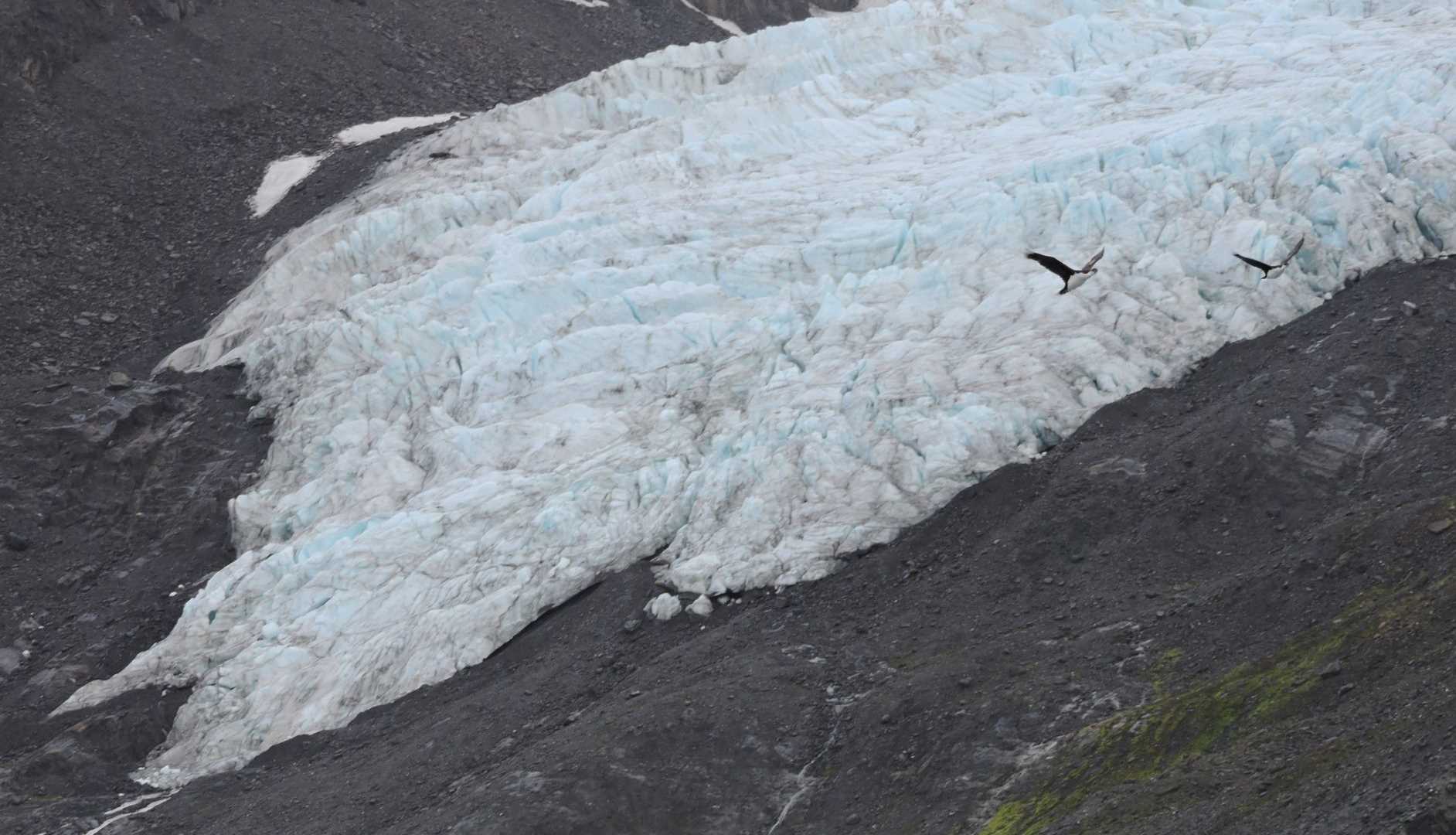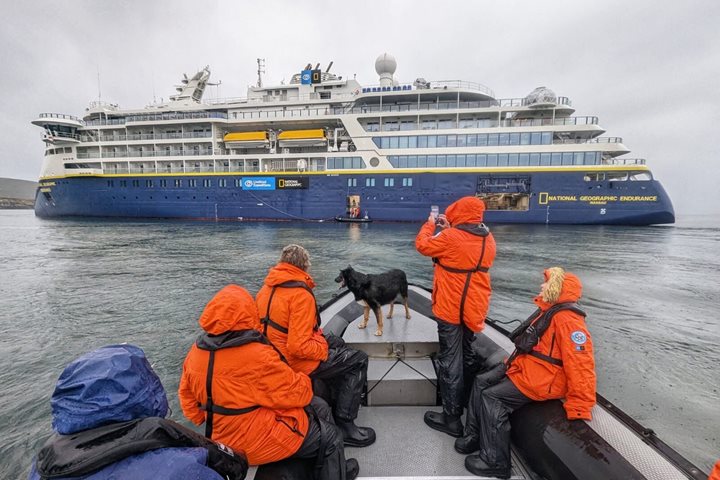National Geographic Orion approached the southern tip of
Elephant Island is probably best known for the role it played in the epic tale of survival of Ernest Shackleton’s ill-fated Imperial Trans-Antarctic Expedition of 1914-16. After their ship Endurance was trapped and eventually crushed by pack ice in the Weddell Sea in October 1915, Shackleton and his men were cast adrift on sea ice for five months until they were able to launch their salvaged lifeboats in April 1916, and make their way here to Elephant Island. It is a very harsh environment, to say the least, but it was salvation to Shackleton’s crew who had been camping on sea ice for five months after the destruction of their ship! This remote island is situated far off the northeastern end of the South Shetland Islands chain.
We sailed past Cape Valentine, at the eastern end of the island, and could see the narrow beach where Shackleton’s group first landed on solid ground after 16 months living on their ship and then on drifting pack ice. Our ship then continued on to Point Wild, where the Endurance crew finally settled at a landing that would serve as home for more than four months. There is not much left of the site where the men camped under the overturned lifeboats, because a lot of it has washed away. Shackleton realized they had no hope for rescue on Elephant Island, so he and five companions set off in one of their three small vessels, a twenty-two foot boat named James Caird, and successfully sailed across eight hundred miles of treacherous ocean to seek help from the whaling stations of South Georgia. The rest of the crew of twenty two men remained here on Elephant Island for four months waiting and hoping for rescue…that is, if Shackleton ever made it to South Georgia. Ernest Shackleton’s astonishing successful small boat voyage from Elephant Island to South Georgia during the winter (April and May) of 1916 was very much on our minds today. It was surely one of the greatest sailing feats of the modern age and leaves many people simply shaking their heads in near disbelief and amazement. We discussed it in a lecture yesterday and showed a film last night of the voyage, which made us appreciate the warmth, dryness, and comfort all the more aboard our own wonderful vessel…especially as we looked out the windows and imagined how much bigger the waves were during the winter storms with which Shackleton had to deal. The sight of Point Wild helped us appreciate the determination of the hardy men who survived this ordeal. The whole story of this expedition from a century ago simply boggles the mind.
A few hours after leaving Point Wild, we sailed near a gigantic tabular berg named B09, which broke off from the Ross Ice Shelf a few years ago. A satellite photo shows it is about the same size as Elephant Island, which measures about 30 miles long and nearly 18 miles at its widest point. When we got close to the berg, it proved to be taller than our ship (remember about 4/5ths or 80% of it is below the surface) and it extended so far from our closest position that it disappeared from our view over the horizon. Numerous caves had been eroded into its face and waves continued to crash into them and all along the steep ice cliff edge.







